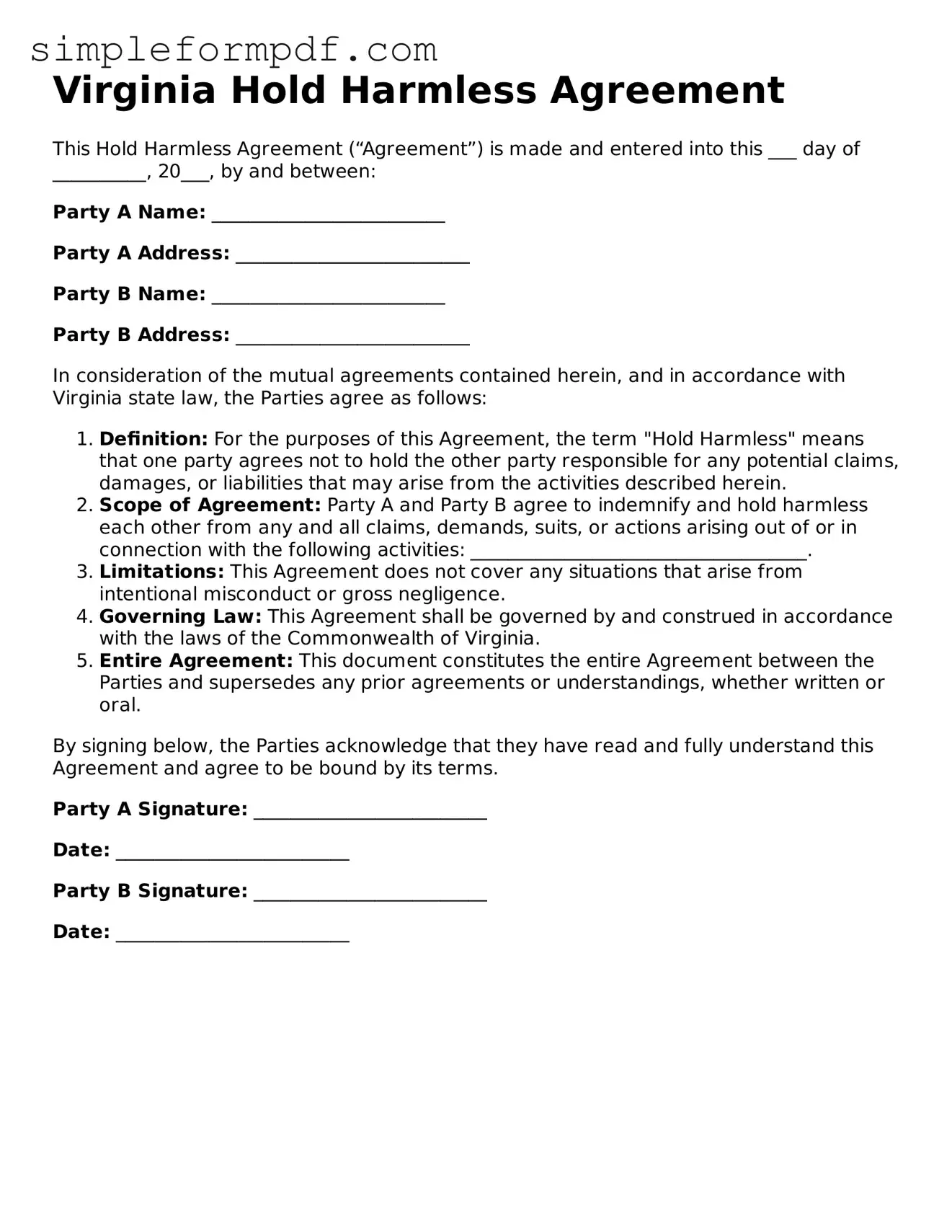Virginia Hold Harmless Agreement
This Hold Harmless Agreement (“Agreement”) is made and entered into this ___ day of __________, 20___, by and between:
Party A Name: _________________________
Party A Address: _________________________
Party B Name: _________________________
Party B Address: _________________________
In consideration of the mutual agreements contained herein, and in accordance with Virginia state law, the Parties agree as follows:
- Definition: For the purposes of this Agreement, the term "Hold Harmless" means that one party agrees not to hold the other party responsible for any potential claims, damages, or liabilities that may arise from the activities described herein.
- Scope of Agreement: Party A and Party B agree to indemnify and hold harmless each other from any and all claims, demands, suits, or actions arising out of or in connection with the following activities: ____________________________________.
- Limitations: This Agreement does not cover any situations that arise from intentional misconduct or gross negligence.
- Governing Law: This Agreement shall be governed by and construed in accordance with the laws of the Commonwealth of Virginia.
- Entire Agreement: This document constitutes the entire Agreement between the Parties and supersedes any prior agreements or understandings, whether written or oral.
By signing below, the Parties acknowledge that they have read and fully understand this Agreement and agree to be bound by its terms.
Party A Signature: _________________________
Date: _________________________
Party B Signature: _________________________
Date: _________________________
